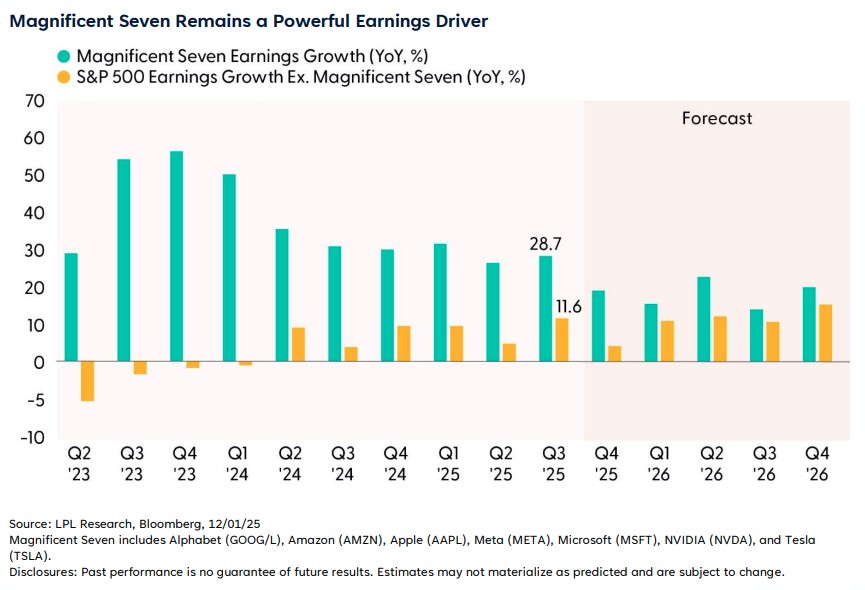December 17, 2025: Mag 7 Continues!
The Magnificent Seven has been responsible for more than half of S&P 500 earnings growth in the past few quarters and will likely continue to play a significant role in growing earnings in 2026. While the wide gap between the Magnificent Seven’s earnings growth and the rest of the market will likely persist well into 2026, supporting large-cap growth stocks, expect this gap to narrow as the year progresses. This is something to watch closely when the calendar turns, as it could spark a market rotation into value stocks.
For the week of December 15th, the US economic calendar features several key reports:
- Tuesday – Jobs Report, US CPI
- Wednesday – US Retail Sales, Initial Jobless Claims
- Thursday – International Central Bank Meetings


